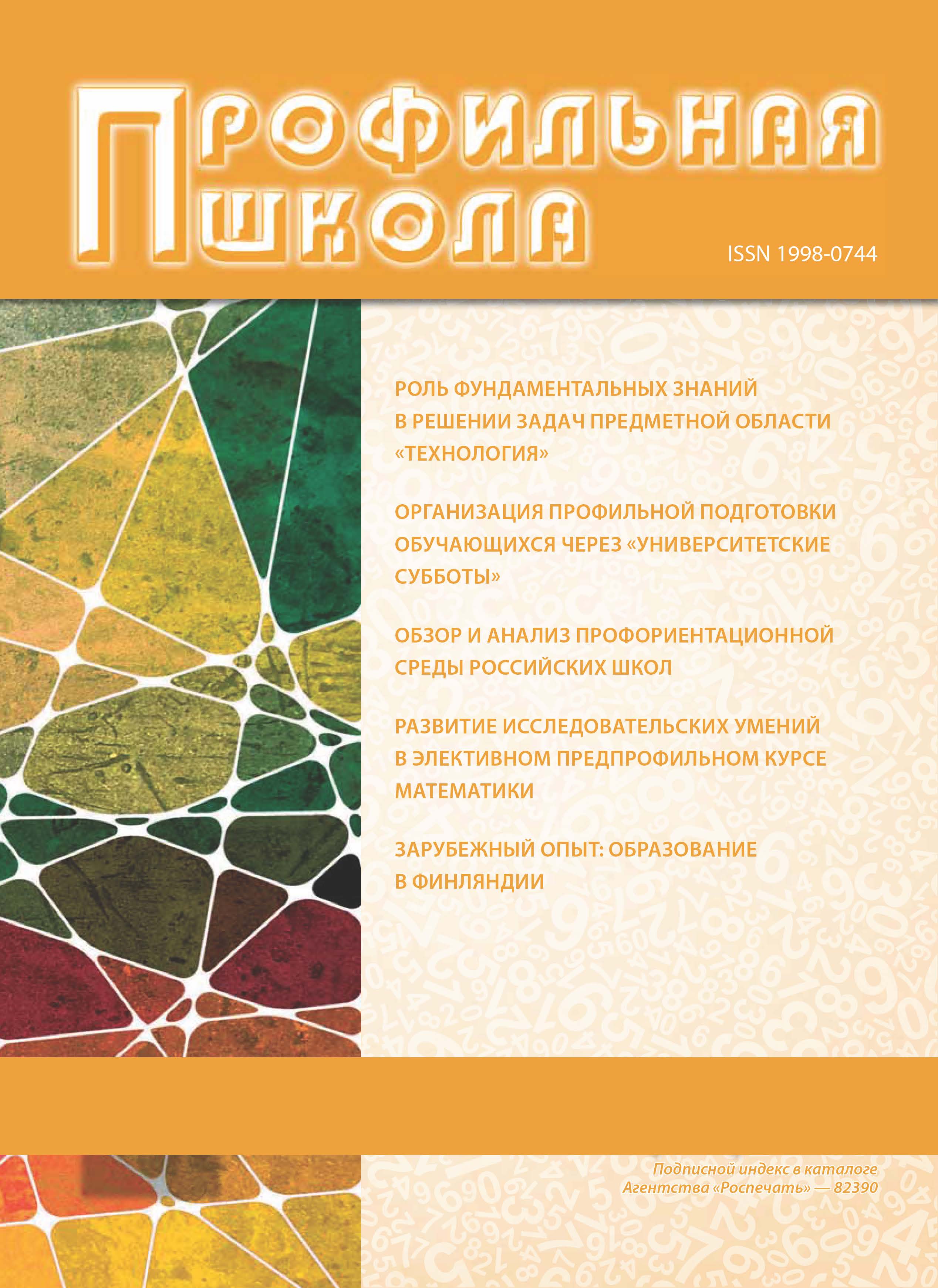The article considers pre-university graphic teaching in technical educational institutions on the example of secondary school “Lyceum № 38” in Nizhny Novgorod, taking into account requests of Nizhny Novgorod State Technical University named after R.E. Alekseev. The article possesses concreteness, technological eff ectiveness and systematic approach of conceptual framework and terminology intuitively clear to experts, teachers and people with engineering education who make the majority of teachers of graphic disciplines at schools and higher education institutions. Methodological approach, which is the basis for selection of educational elements, conforms to the requirements of modern pedagogical technologies. The purpose of methodological approach is teaching schoolchildren to read and execute drawings of details and assembly units of machine building and construction plans, and to apply graphic knowledge to solving creative tasks. That promotes mastering the basic knowledge and engineering graphics receptions both in «manual technologies» and in using computer technologies. A basic graphics package is AutoCAD. It will provide further study of special disciplines according to technologies of modern engineering.
school lyceum, graphic disciplines, manual technologies, computer technologies, student preparation.
В национальной доктрине образования Российской Федерации на период до 2025 г. подчеркивается, что главной целью высшего образования является подготовка высокообразованных и высоквалифицированных специалистов, способных к дальнейшему профессиональному росту и мобильности в современных условиях информационного и интеллектуального пространства. Решение этих задач ориентируется, прежде всего на включение в учебный процесс достижений научно-технического прогресса, а именно информационно-коммуникационных технологий [1]. Под средствами информационно-коммуникационных технологий следует понимать программные, программно-аппаратные и технические средства и устройства, функционирующие на базе микропроцессорной вычислительной техники, а также средства и системы информационного обмена, накоплению, хранению, обработке, передаче, использованию информации, возможность доступа к информационным ресурсам компьютерных сетей [2]. Термин «компьютерные технологии», отражающий уровень автоматизации информационных технологий в настоящее время, следует трактовать как разновидность информационных технологий, в которой определяющим средством создания, обработки, хранения и передачи информации является компьютер [3].
1. Natsional’naya doktrina obrazovaniya v Rossiyskoy Federatsii (postanovlenie Pravitel’stva RF ot 04.10.2000 № 751). Sobranie zakonodatel’stva RF, 09.10.2000, № 41, s. 4089. [National Doctrine of Education in the Russian Federation (Russian Federation Government Resolution of 04.10.2000 № 751). Collection of Laws of the Russian Federation, 09.10.2000, № 41, p. 4089.]. Ofitsial’nyy internetportal pravovoy informatsii [he official internet-portal of legal information]. Available at: http://www.pravo.gov.ru/ 02.04.2014.
2. Guzeev V.V. Osnovy obrazovatel’noy tekhnologii: didakticheskiy instrumentariy [Fundamentals of educational technology]. Moscow, Sentyabr’ Publ., 2006. 192 p.
3. Apatova N.V. Informatsionnye tekhnologii v shkol’nom obrazovanii [Information technology in school education]. Moscow, RAO Publ., 1994. 228 p.
4. Knyaz’kov V.V. Tekhnologii CAD-sistem v inzhenernom graficheskom obrazovanii [Technology of CAD-systems in engineering graphics education]. Kontsept [Concept]. 2012, I. 4 (April).
5. Skobeleva I.Yu, Shirshova I.A., Mukhina M.L. Nachertatel‘naya geometriya [Descriptive Geometry]. Nizhegorod. gos. tekh. un-t Publ., N. Novgorod, 2013. 150 p.
6. Skobeleva I.Yu., Shirshova I.A., Gareeva L.V., Knyaz’kov V.V. Inzhenernaya grafika [Engineering Graphics: The complex teaching materials for students of correspondence and distance learning.]. Nizhegorod. gos. tekh. un-t Publ., N. Novgorod, 2008. 127 p.
7. Romanycheva E.T. AutoCAD 14 [AutoCAD 14]. Moscow, DMK Publ., 1999. 480 p.
8. Mashbits E.I. Komp’yuterizatsiya obucheniya: problemy i perspektivy [Computerization of education: problems and prospects]. Moscow, Znanie Publ., 1986. 80 p.






